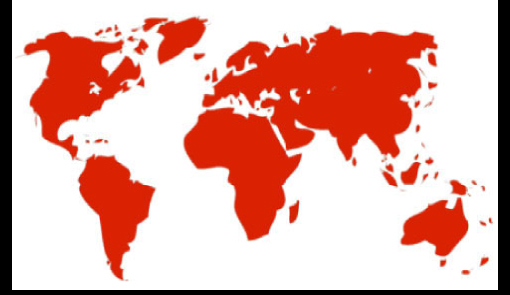Print  |
|


Welsh
Data on the Welsh language
Alternative names: Cymraeg (self-designation)
Geographical area: Most speakers of Welsh live in Wales, UK. The language is also spoken by the Welsh diaspora, mainly in England, but also in USA, Canada and Argentinian Patagonia.
In Wales, most speakers are found in the rural areas of the West and North rather than in the larger cities and the industrial Southeast, although the number of speakers in Cardiff (Caerdydd) and Swansea (Abertawe) does tend to increase slightly.
Main dialects: Two main dialectal groups are generally discerned: northern Welsh (informally known as Gog) and southern Welsh (Hwntw). This traditional distinction, clearly marked in the representations of the language, is only partially consistent with the linguistic reality of Wales. The Gwynedd dialect, however, in the North-West, remains relatively distinct from the others.
Classification: Indo-European language family, Celtic subgroup, Brythonic branch.
Even though the Celtic languages belong to the great Indo-European family, they form a distinct group from the majority languages of Western Europe such as the Romance (French, Spanish, Italian, etc.) or the Germanic languages (English, German, Dutch, etc.).
Welsh belongs to the same Celtic branch (Brythonic) as Breton or Cornish. It is genetically more distant to the languages of the Gaelic branch (such as Irish, Scottish Gaelic, or Manx).
Number of speakers: Wales counts 611,000 speakers of Welsh, according to the Welsh Language Use Survey of 2004. This figure, however, does not necessarily reflect the number of speakers having a significant level of command of the language. About half of these speakers (315,000) consider themselves as “fluent” in Welsh, and 66% (363,000) declare using Welsh on a daily basis.
It is worth noting that, theoretically, there are no more monolingual speakers; all of them are Welsh/English bilinguals. Incidentally, though, many children remain monolingual in Welsh up to the age of 6, particularly in the North.
Estimating the number of Welsh speakers outside Wales is a delicate task. The UN accounts for 150,000 in England. In Canada and USA, the number probably does not exceed 5,000 people altogether – the Welsh immigration community having essentially given up the language. A large part of the toponymy of Philadelphia is Welsh (Brynmawr, for instance). A Welsh community migrated to Argentina at the end of the 19th century and settled in southern Patagonia, in the province of Chubut. Their descendants represent around 50,000 people but the number of Welsh speakers among them is not known. The Ethnologue (16th ed.) accounts for 25,000 Welsh/Spanish bilinguals in Argentina, though such a figure appears rather exaggerated.
Taking into account the different levels of proficiency, the total number of Welsh speakers around the world could possibly reach over 700,000.
Language status: Official language of Wales, alongside English. Public services must be delivered in both languages. Many private companies also offer services in both languages.
The Welsh Assembly (Y Cynulliad), established in 1999, entirely runs in two languages.
The Welsh language board (Bwrdd yr Iaith Gymraeg) is the official organ of promotion and regulation of the Welsh language. It was created following the Welsh Language Act of 1993. The objective of Welsh institutions is to create, in Wales, a balanced form of bilingual society.
Welsh is recognized as a regional language by Great Britain, who has signed the European Charter for Regional or Minority Languages.
Media: Several radios in Welsh (including BBC Radio Cymru, available online), adding to a Welsh television channel (S4C), several weekly (Y Cymro), monthly magazines (the high quality publication Barn) and smaller-scale local reviews.
Welsh is relatively well-represented on the Internet.
Education: Studies have shown that the abandonment of the language was directly related to the level of knowledge in reading in writing in Welsh. The less literacy a speaker of Welsh had, the more he or she tended to give up the language to the benefit of English. Therefore education was soon considered crucial to the preservation of Welsh. The reversal of the declining trend from the 1990s was directly related to the emergence of teaching (in) Welsh.
Nowadays in Wales it is possible for children to receive full-education in Welsh. About 20% of the schools offer exclusively Welsh education, 12% run on different degrees of bilingualism, and nearly 50% offer Welsh as a second language. The teaching of Welsh is also widespread in secondary education and university.
There is a fair supply for adult migrants or English speakers who wish to learn Welsh as a second language.
Vitality & Transmission: The situation of Welsh is a paradox. UNESCO considers the language to be “endangered”.
Yet a 2001 census in Great Britain showed a progression in the number of people who declared being able to speak Welsh. Eluding most predictions, it appears obvious now that Welsh is in a far better position than a century ago. In that sense the case of Welsh stands as a (nearly unique) model in Europe.
Nevertheless, linguistic mapping studies reveal that home-transmission is in decline in the traditional linguistic areas, whereas school-transmission increases in the more Anglicized areas, particularly in Cardiff.
So even if the absolute number of speakers is increasing, even if the representations of Welsh within the Welsh population have followed an overall positive evolution for the past 20 years, and even if the Welsh institutions do demonstrate determination and ingenuity, mobilizing substantial resources so as for the language to gain more space in the public sphere, the “minorization” of Welsh continues. “Balanced bilingualism” remains way out of reach, and the vitality of Welsh remains precarious.
Sorosoro blog – James Costa-Lynch’s article on the subject
Historical details
Welsh is generally considered to have emerged per se around the 6th century. It comes from the variety of Brythonic (or Breton) that was spoken in Great Britain during the Roman era, and incorporates a number of Latin borrowings. At the time, the Welsh linguistic area was much larger that today’s – reaching southern Scotland, northern England (Cumbrie). The Anglo-Saxon and later Norman domination over England gradually confined the Welsh language to Wales, constantly pushing it west. The Brythonic variants of Scotland disappeared in the 12th century. Scottish Gaelic is related to Irish, imported from Ireland in the 3rd and 4th centuries.
The Matter of Britain, which gave the tellings of the Grail Quest, is believed to have been written in Welsh.
The Welsh tradition of literature and poetry is very significant. It dates back to the bards (bardd, pl. beirdd) – learned and well-read. This tradition of literature generated a written form of ancient Welsh, followed later by a standardized form found across the Middle Age as the language of administration and jurisdiction.
The Laws in Wales Acts of 1536 and 1542 imposed the official use of English all over the United Kingdom. From then on, the status of Welsh speakers kept declining until the 1960s. Welsh greatly suffered from the English economic migrations of the 19th century, due to the industrial development of southeastern and northeastern Wales. Over the 19th century, the monolingual English speaking population of Wales was multiplied by 7!
In the beginning of the 1870s, estimations account for 75% of the Welsh population speaking Welsh. This figure dropped to 50% in 1895. 20.8% of the population spoke Welsh in 1971, 19% in 1981, 18.7 % in 1991…
However, several struggles starting from the 1960s –led among others by author Saunders Lewis – contributed to the establishment of linguistic policies in favor of Welsh speakers, and helped the Welsh language claim back some of the prestige and interest it had lost.
Ethnographic observations
Poetry is still at the heart of life in Welsh, and Eisteddfodaus are held all over the country to choose the best local or national singers, poets, or harpists. The national Eisteddfod is organized by the The Gorsedd of Druids, Bards and Ovates of the Island of Britain.
Linguistic observations
The Breton and the Welsh are often said to understand each other, which is a long-lasting linguistic myth. While a speaker of Breton or Welsh might easily discern numerous words of vocabulary in the other language, this does not imply that mutual understanding is immediate. Compare, for instance, the term referring to the sea: Y môr (Welsh) / Ar mor (Breton) with the phrase referring to tiredness: Rwy’n flinedig (Welsh) / Skuizh on (Breton).
A few links for further information
Bibliography
Ball, Martin J & Müller Nicole (eds). 2009. The Celtic Languages, 2nd Edition. London, Routledge
Pamela Petro, Travels in an Old Tongue: Touring the World Speaking Welsh, Flamingo, réédition 2009.
Costa-Lynch James, Le Gallois de Poche, Assimil, 2005.
Please do not hesitate to contact us should you have more information on this language: contact@sorosoro.org








